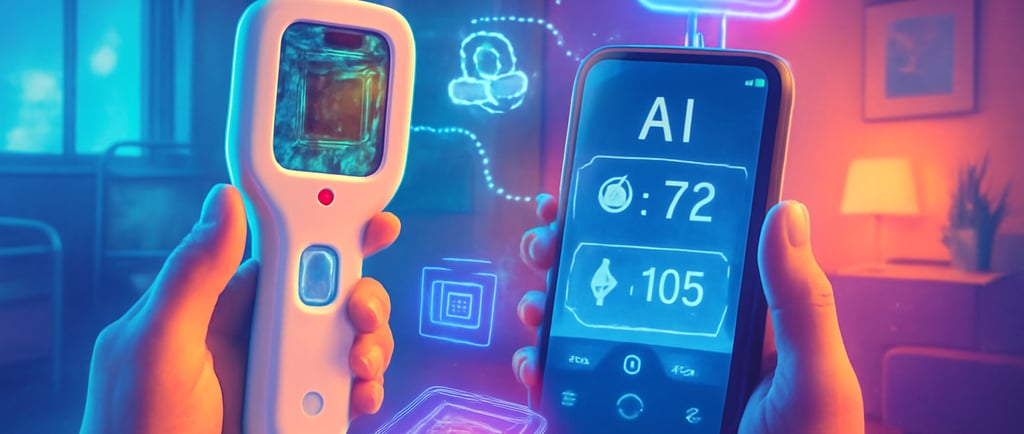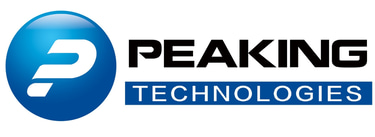The Future of Medical Devices: What Electronics Developers and Startups Must Know
Discover how cutting-edge semiconductors, AI, and IoT are transforming medical devices into portable, intelligent tools for real-time diagnostics. A must-read for electronics developers and MedTech startups.
JoeZ
6/10/20255 min read


The medical device industry is undergoing a transformative shift, powered by advancements in semiconductor engineering, smart sensors, cloud connectivity, and artificial intelligence. For electronics developers and startups, this transformation presents enormous opportunities — and complex challenges.
Gone are the days when medical devices were clunky, stand-alone machines used strictly in hospitals or clinics. Today’s devices are intelligent, portable, connected, and patient-facing. They don’t just collect data; they analyze, diagnose, and in some cases, even suggest treatments — all in real time. And they do this outside of clinical environments, in homes, remote villages, or on the move.
In this post, we’ll break down the key technological and business shifts redefining medical devices, based on insights from the Semiconductor Engineering roundtable discussion. We’ll also provide strategic takeaways for developers and startups seeking to tap into this rapidly evolving sector.
1. From Hospital Rooms to Living Rooms: The Shift Toward Field Deployability
Traditional model: One device, one doctor, one patient, in one location.
New model: A distributed network of smart medical devices, used anywhere, connected to everything.
Modern medical devices are being designed for field deployment. That means they’re:
Portable: Small enough to fit in a backpack or on a wrist.
Rugged: Able to withstand variable environmental conditions.
Battery-powered: Optimized for power efficiency.
Cloud-connected: Continuously sending data to remote health professionals.
For startups, this shift demands expertise in embedded systems design, low-power architectures, and wireless communication protocols such as BLE, LoRa, or NB-IoT.
2. Complexity Behind the Simplicity: The Rise of System-in-Package (SiP)
As devices shrink and user interfaces simplify, the internal architecture becomes increasingly complex. Modern medical devices are now powered by:
Multiple ICs in compact packages.
Custom ASICs or SoCs for optimized performance.
Stacked dies with sensors, memory, and RF modules.
Designing and testing such devices requires a multidisciplinary skill set — combining analog design, RF engineering, firmware development, and thermal management.
For electronics startups, embracing advanced packaging techniques like SiP and multi-die integration will be key to staying competitive.
3. Lab-on-a-Chip: Marrying Microfluidics with Microelectronics
A particularly exciting trend is the development of Lab-on-a-Chip (LoC) systems. These are palm-sized devices that can perform diagnostics equivalent to traditional lab equipment — analyzing blood, saliva, or urine using microfluidics, biosensors, and AI-based analytics.
To build these devices, engineers must master the integration of:
Micro-electromechanical systems (MEMS)
Fluidics channels etched on silicon or polymer substrates
Optical sensors and miniaturized electrodes
Complex signal processing algorithms
This area represents a massive opportunity for startups to innovate — especially in remote diagnostics, pandemic preparedness, and home testing kits.
4. Security at the Core: Data Privacy in Connected Health
In a world where medical devices are part of the Internet of Medical Things (IoMT), data privacy and security are mission-critical.
Challenges include:
End-to-end encryption between device, mobile app, and cloud.
Data anonymization before sharing with hospitals or AI platforms.
Device authentication and firmware protection against tampering.
Regulatory compliance (e.g., HIPAA in the U.S., GDPR in Europe).
For developers, this means working closely with cybersecurity experts, using hardware-based security modules (HSMs), and ensuring all communication stacks are hardened.
5. Intelligence on the Edge: Embedded AI for Real-Time Analysis
One of the most disruptive forces in medical electronics is Artificial Intelligence — not in the cloud, but on the device itself.
With improvements in edge AI chips and tinyML frameworks, developers can now deploy models that:
Detect abnormal heart rhythms from ECG data
Predict blood glucose trends using historical sensor inputs
Identify patterns in respiratory data or sleep cycles
Onboard diagnostics allow the device to not just collect data, but to self-check, self-calibrate, and even recommend next steps — a game changer for usability and safety.
6. Material Matters: Custom Chemistry, Custom Constraints
Medical devices are unique in that they must be biocompatible, chemically stable, and environmentally sealed — while remaining low-cost and scalable.
Some challenges startups must navigate:
Many devices involve onboard chemistries that are fragile under high temperatures, limiting manufacturing techniques.
Packaging materials must resist moisture ingress and chemical corrosion.
There is growing scrutiny over material supply chains, particularly for devices used in critical care or pharmaceutical settings.
Startups must work with material scientists and custom manufacturing partners to ensure that electronics and biocompatibility go hand in hand.
7. Redundancy and Ease of Use: Engineering for the Layperson
Because many modern medical devices are used by patients themselves, they must be:
Simple to operate with minimal training
Redundant in critical functions (e.g., backup batteries or sensors)
Fail-safe, with graceful degradation modes
User experience (UX) is no longer an afterthought. It must be a core part of engineering.
Adding haptic feedback, LED indicators, voice commands, or companion apps is often essential — and can determine market success or failure.
8. Communication Stack: From Device to Doctor
One of the unsung heroes of medical device innovation is the communication infrastructure that connects the device to decision-makers.
Typically, data flows like this:
Device captures data via sensors.
Device pre-processes and sends data to a smartphone app or gateway.
App transmits data to the cloud for storage and further analysis.
Data is accessed by doctors or AI platforms for decision-making.
Each step requires careful design:
Low-latency, low-power communication protocols
Mobile SDKs and APIs for cross-platform compatibility
Cloud architectures that support both real-time and historical data analysis
Startups must invest in full-stack development capabilities — from embedded C to AWS Lambda.
9. Manufacturing Evolution: From Assembly Line to Wafer Fab
Traditional medical device manufacturing relied heavily on mechanical assemblies and manual calibration.
The new generation is moving toward:
Silicon-based integration, with minimal mechanical parts.
Use of MEMS sensors, integrated actuators, and biochemical layers on chips.
Automated calibration, testing, and software updates.
Startups must work with fabs, advanced PCB houses, and microfabrication specialists — possibly even transitioning from traditional EMS providers to semiconductor foundries.
10. Toward Autonomous Diagnostics: The Future of Remote Care
In the not-so-distant future, many medical devices will be autonomous health agents. They will:
Continuously monitor vital signs
Detect early signs of illness
Alert caregivers or emergency services
Provide personalized feedback and treatment suggestions
This will not replace doctors, but augment their reach, especially in under-resourced or rural settings.
Startups have an opportunity to drive this transformation — provided they can master both the technical complexity and the regulatory landscape.
Strategic Advice for Electronics Startups Entering MedTech
1. Collaborate early with regulatory experts.
Get familiar with FDA (Class I–III) or CE marking requirements. Even at the prototyping stage, design with compliance in mind.
2. Adopt modular design principles.
Build your platform so that diagnostic modules, power subsystems, and communication layers can be swapped or upgraded.
3. Invest in cross-disciplinary talent.
Bring together engineers, data scientists, doctors, materials experts, and user experience designers from Day 1.
4. Choose the right partners.
Look for semiconductor companies, PCB fabricators, EMS partners, and software vendors that have experience in MedTech.
5. Prepare for long sales cycles.
Hospitals, governments, and insurers move slowly. Consider B2C or D2C models (e.g., wellness or fitness devices) for early traction.
Final Thoughts
The evolution of medical devices — driven by semiconductors, sensors, AI, and cloud connectivity — is more than a technological trend. It is a paradigm shift in how healthcare is delivered, accessed, and experienced.
For electronics developers and startups, this is a once-in-a-generation opportunity to build life-saving, world-changing technologies. But success will depend on your ability to integrate disciplines, navigate regulations, and design for both functionality and human experience.
The stethoscope and the syringe may still have their place — but the future of medicine is in the microchip.
